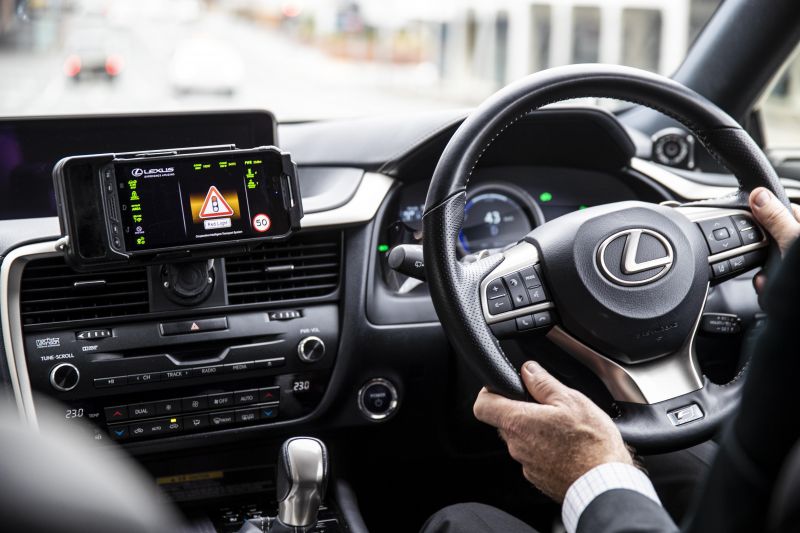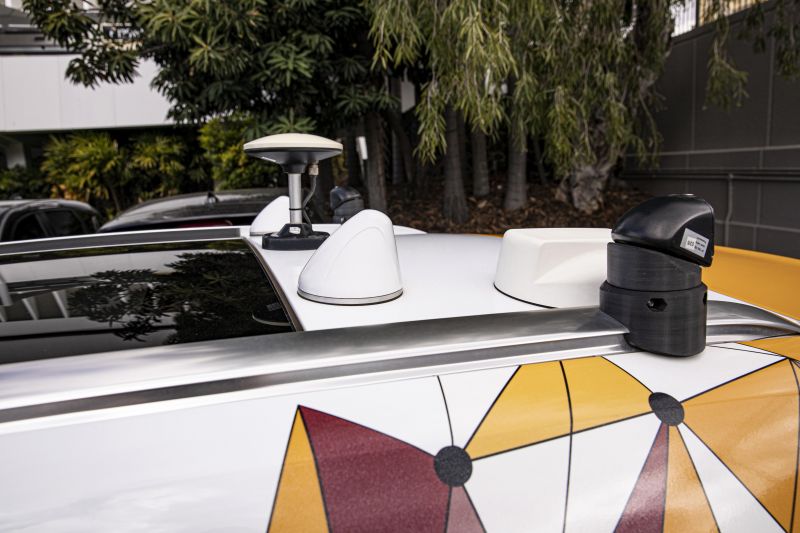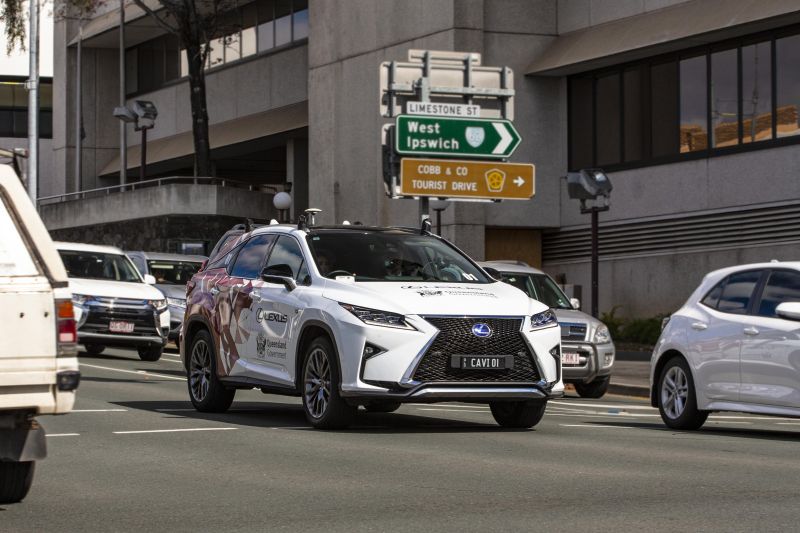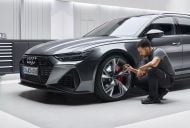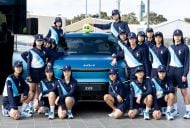Lexus is putting connected cars through their paces in Queensland.
The connected vehicle project in Ipswich kicked off earlier this month, testing the benefits of having cars talk to traffic lights, pedestrian crossings, and road works. The aim of the Dedicated Short-Range Communications (DSRC) test is to explore how it can reduce road accidents, and smooth out traffic flow in the process.
The Lexus RX450h test vehicles chosen for the exercise are part of a four-year project to bring connected vehicles to Australia. In Japan, more than 250,000 vehicles already make use of the technology.
A standard of communication between manufacturers has largely been agreed upon, as carmakers push to make the technology brand-agnostic.
The idea is to allow more seamless communication between vehicles, traffic lights and even pedestrians. When a traffic light is turning red, for example, the car can tell the driver to slow down in advance.
It also works if there’s a vehicle broken down up the road (with its hazard lights on). The two cars can talk to each other, with the wounded car warning upcoming traffic to give drivers more time to avoid.
The technology extends to pedestrian crossings; when a pedestrian pushes a signal call button to cross the road, the vehicle is informed. It works when the driver is turning, because the car is smart enough to recognise the indicator.
The technology works by using radio waves and can also warn of changing speed limits and using GPS data, allow the council to inform vehicles of upcoming road works and their set speed limit.
We got behind the wheel of one of the test RX450h models for a test drive around Ipswich. Eventually the goal is to have the tech integrated into a car’s infotainment system, but for now it operates through an Android tablet talking to the host of sensors on the roof.
It’s not the neatest integration ever, but this is a prototype.
We experienced the RX450h’s seat vibrating, and saw warnings to inform us not only of pedestrians intending to cross the road, and when our speed was too high when the light ahead was red.
We then witnessed the vehicle warn us when another equipped car had its hazard lights on further ahead for demonstration purposes.
The system was less intrusive than expected, and actually was welcome when we got used to it. It even picked up unplanned road works, as Ipswich city council had updated its GPS locations for work being done in the area.
The idea would be eventually, as more cars have this technology, drivers will be better informed, and earlier than is currently the case in changing conditions.
The next phase of the trial will see the Ipswich pilot expanded to fit 500 local cars with the DSRC technology, enabling more vehicles to communicate with the infrastructure.

